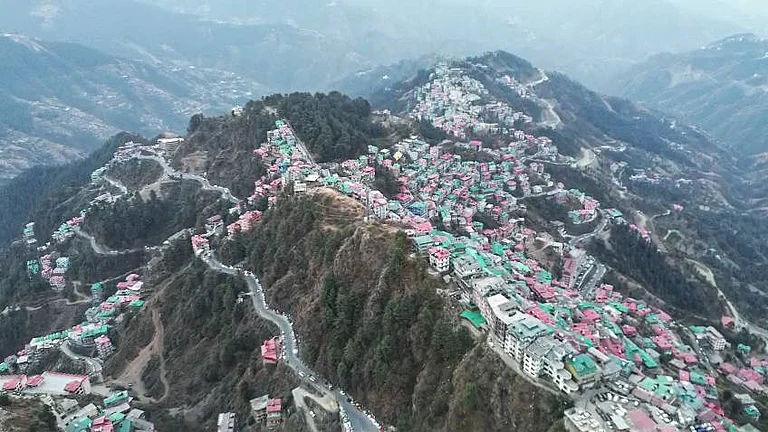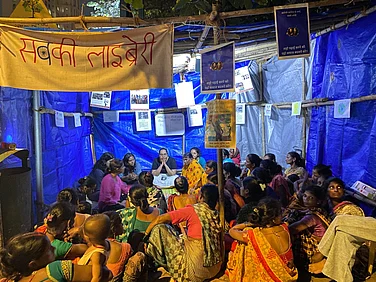Hindi literary journals have often published writings on the environment, but there’s hardly any special issue dedicated to among the most pressing themes of our times. In the backdrop, the journal Sadaneera has brought out its recent issue on the anthropocene, perhaps the first such intervention in the language. Not many in the Hindi world are even aware of the term anthropocene, which denotes an era in which human activities have caused a permanent and decisive impact on the planet and its ecosystems. Various ecologists and scientists have differently defined the temporal boundaries of the era with a general consensus about its characteristics.
Sadaneera mostly focuses on world poetry, but it has also published special issues on topical themes, a recent one was on LGBTQ. The magazine was founded by the legendary Agneya, with the young poet-novelist Avinash Mishra being the current editor. The bilingual writer Jey Sushil has guest-edited the issue on the anthropocene, a term that has not yet become a part of our daily vocabulary.
He has curated a rich collection of essays, travelogue, and reportage, besides poems of as many as 25 poets of different languages including English, Bangla, Nepalese, Assamese, Rajasthani, Kumauni, Urdu and Hindi. Some of the poets include Navkant Barua, Naomi Stone, Vijay Mall, Majeed Ahmad, Sarvat Hussain, Shakti Chattopadhyay, Girish Tiwadi 'Girda', Om Purohit 'Kagad', Anuj lugun and Parvati Tirki. The issue is crowned with artworks, sketches and photographs by artists who have extensively worked on nature in the past.
The journal begins with Sushil’s editorial, who chanced upon the idea during a course on 'Fictions of Anthropocene' in his graduate studies. He discusses the origin of the term and its recurrence in fiction writings of the West and the East. The special issue, he writes, is an attempt to establish that there is abundant literature available in India (and other Asian societies) on the topic, which many mistakenly believe to be a Western concept. Concerns about the environment are deep-rooted in Eastern civilizations and their literature.
Environment is not an easy topic to be dealt with in a scholarly way. While the first challenge is to highlight an issue about which not many are still prepared to talk, the bigger problem is of terminologies, especially in Indian languages. How does one denote and explain a range of issues in Hindi?
In a fine essay, the journalist-translator Chandan Srivastava tries to derive a Hindi word for the anthropocene. He underlines that “the conviction of Hindi language to be a source-language of wisdom and knowledge might be strong, but still it hasn't achieved its goal.” He discusses many suitable words in Hindi for the anthropocene such as nav manav yug (the era of the new man), but he underlines that 'cene' is used in the sense of 'novelty' and 'yug' (era) doesn't fully reflect its meaning.

In another article, the journalist and essayist Sopan Joshi points out that many birds, animals and species of flora are being wiped out due to indiscriminate deforestation at a pace that can be called 'the era of extinction'. He notes with disappointment that the various goals laid down at the 1992 Rio de Janeiro summit have been widely ignored. Some 'environment-enthusiasts' even go on to say that any calamity or epidemic is a curse of god or nature to teach us a lesson. "As if nature is bound by the man-made justice system. As if the parameters of nature are shaped by the perspective of humans, in which all our deeds are taken into account and we are punished or favoured accordingly!", he writes.
Sopan argues that discourse about the environment in sophisticated spaces and terminologies will not help us, an opinion that Amitav Ghosh also shares in his interview with Sushil. Answering a question about the relationship of the Anthropocene and climate change with literature, Ghosh asks: 'If facts have not been able to change people's minds, how would a novel be able to do that?' Ghosh also talks about his books, 'The Hungry Tide', 'Gun Island' and 'The Great Derangement', and about the single hero concept (an ideology in which a hero single-handedly resolves any problem) of Western literature and how it's not suitable to express the concerns of the Anthropocene.
Rivers and the communities who live along the banks have been the backbone of both our environment and our civilization. The journal has three fine prose texts on rivers, one of which is by the researcher Rama Shanker Singh, who has recently published a rich and insightful book on rivers and the Nishads. The journalist Umesh Kumar Rai has contributed a diary-based reportage from the Sunderbans, in which he travels from village to village, island to island and conveys the saddening images of the first Indian (according to some scholars, first in the world) climate refugees. A refugee asks: “To whom do we complain? To the river? Our civilizations were born by the side of and thrived on their banks, how can we blame rivers!”
The journal also has a moving excerpt from the book 'How I became a tree' by Sumana Roy. She describes in vivid details how the cut-throat competition led her to train herself to live in a 'tree-time frame'. She says that trees never become the news because they're neither responsible for any coup nor do they cause any war. The journal also has a fine travelogue by the essayist Ashok Pande on the Darma valley and an essay by the flood expert Dinesh Kumar Mishra on the historical and ecological causes of floods in Bihar.
Environmentalism is often mistakenly believed to be a theme only in poetry. The scenic beauty of mountains, rivers, and flowers isn't what constitutes the environment. Environmentalism includes rivers transformed into sewers, decaying mountains, continued desertification, poisonous air and drowning cities due to increasing water level of the sea because of climate change. How does one write about these “non-poetic” issues?
The great poet Ghalib once said: “'I need a broader expanse of the horizon to express myself.” Allow me to recall two poets here, Sukant Bhattacharya and Devi Prasad Mishra. While Sukant has written that “the Earth is non-poetic in the realm of hunger”, Mishra says in a poem: "I know how to write verses/but the crisis of Hindi can only be expressed in prose."
This issue of Sadaneera is a remarkable attempt to articulate the environmental crisis in both prose and verses.
(Aman Tripathi is a Hindi poet and independent researcher).






















